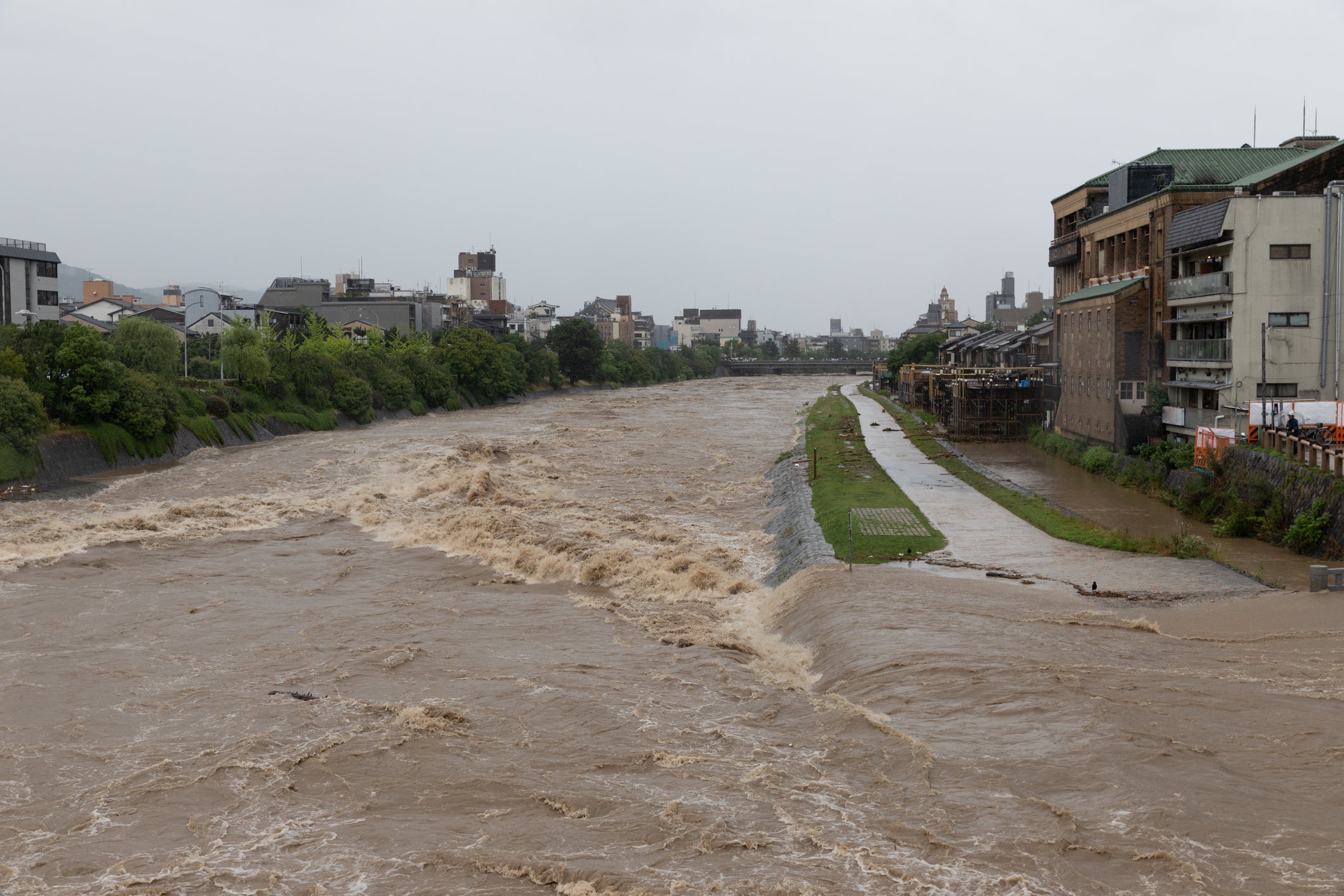Disaster prevention items and seasonal changes: Prepare according to weather conditions
table of contents
Introduction
1. Spring: the season of preparation and vigilance
2. Summer: Prepare for heatstroke and typhoons
3. Autumn: Post-typhoon recovery and earthquake preparation
4.Winter: Withstand cold and snowfall
summary
Introduction
Natural disasters have different characteristics depending on the season, and it is important to prepare appropriate disaster prevention items to cope with them. In this article, we will explain in detail how to choose disaster prevention items according to the weather conditions of each season and key points for preparation.
1. Spring: the season of preparation and vigilance
Spring is a beautiful season with cherry blossoms in full bloom, but it is also characterized by unstable weather. Spring is susceptible to rain and wind, and there are sudden changes in temperature. Below, we will introduce important items for spring disaster preparedness.
1-1 Rain gear and umbrella
Spring is a rainy season. We recommend carrying a compact umbrella so that you can go out even in case of sudden rain. Additionally, having rain gear such as lightweight, waterproof jackets and pants on hand will make going out in the rain more comfortable.
1-2 Cold weather gear
In spring, there is still a big difference in temperature, so warm clothing is necessary. It can get cold, especially at night and early in the morning, so it's a good idea to bring some light winter clothing. We recommend items that are lightweight and have high heat retention.
1-3 Emergency food and water
Rain and wind may make it difficult to go out, so it is important to stock up on emergency food and water. Aim to stock up on at least 72 hours of canned food, dry food, and water bottles.
1-4 Information collection means
Spring is a season where sudden changes in weather are likely to occur. It is important to get into the habit of frequently checking weather forecasts and disaster information using the radio or smartphone apps. Useful for disaster response.
1-5 Be careful about outdoor activities
Spring is the season when outdoor activities such as cherry blossom viewing and picnics increase. However, you may experience sudden rain or cold weather. When going out, be sure to take appropriate clothing and items with you in case the weather changes, and take care of your health.
1-6 Preparing the car
If you own a car, you may be affected by sudden rain and wind. To ensure safety while driving, it is important to have emergency food, water, flashlights, blankets, and other disaster prevention items in your car, in addition to umbrellas and raincoats.
2. Summer: Prepare for heatstroke and typhoons
1-1 Heatstroke prevention items
Heat stroke caused by the summer heat is a serious problem. Please keep the following items and measures in mind.
① Cool clothes and hats
Protect your head from direct sunlight by wearing light, breathable clothing and wearing a hat.
② Hydration
Constant hydration is important. Carry a water bottle and sports drink with you and drink frequently.
③ Cooling goods
You can lower your body temperature using items such as ice packs and cooling towels.
④Indoor evacuation area
Extended outdoor activities increase the risk of heat stroke. Take shelter in a cool room and use an air conditioner to keep yourself warm.
2-2 Typhoon countermeasure items
Summer is also the season when typhoons occur, so you need to be prepared for sudden disasters. Prepare the following items and measures.
①Radio and charger
Make sure you have a radio and a smartphone charger on hand to stay informed in case of an emergency. A rechargeable power bank can also be helpful.
②Emergency food and water
It is important to stock up on emergency food and water in case you need to evacuate. Stock up on canned and dried food and drinking water.
③Evacuation site and evacuation route
By identifying evacuation sites near your home or workplace and knowing the evacuation route, you can quickly move to a safe location when a typhoon approaches.
④Securing outdoor items
Due to the risk of flying objects from strong winds and gusts, it is important to securely secure outdoor items such as furniture and flowerpots in your garden or balcony.
⑤Inspection of disaster prevention supplies
Regularly check that your emergency kit and disaster prevention supplies are in working condition and replenish them with the necessary items.
2-3 Precautions when going out
Summer is the season when outdoor activities increase, but be careful of the following points to protect yourself from heat and UV rays.
①Restrictions on activities under the scorching sun
Avoid going out for long periods of time, especially in the scorching sun during the day. Try to go out during times when the temperature is relatively low, such as in the morning or evening.
② Sunburn measures
Applying sunscreen cream protects your skin from UV rays and prevents sunburn.
③ Sufficient rest
To prevent heatstroke, take frequent breaks and avoid exhausting your body.
2-4 Food management
Food is more likely to spoil during hot weather. Be careful with food management and practice the following to prevent food poisoning.
2-5 Checking the freshness of ingredients
When purchasing ingredients, check the expiry date and use-by date, and choose fresh foods.
2-6 Proper storage
Store perishable foods in the refrigerator at appropriate temperatures to prevent spoilage. Also, be sure to check that the food is heated before eating.
3. Autumn: Post-typhoon recovery and earthquake preparation
3-1 Recovery and maintenance after typhoon
Autumn is the time when damage needs to be repaired and houses need to be repaired after the typhoon has passed. Please note the following points.
① Confirm and report damage
You can receive prompt support by confirming the damage caused by the typhoon and reporting it to the necessary institutions and local governments.
② Roof and window repairs
Typhoons can break roof tiles and window glass. Address any areas that require repair as soon as possible to prevent damage from occurring again.
③ Garden maintenance
It is important to clean up trees and garden equipment that fell during the storm and keep them safe. Also, prune your trees to improve ventilation.
3-2 Earthquake countermeasure items and countermeasures
Autumn is also the season when earthquakes are most likely to occur. Items and measures to prepare for an earthquake are explained below.
① Inspecting the emergency kit
An emergency kit includes things like food, water, medicine, and a flashlight. We recommend that you check it regularly and update the content with fresh information.
②Seismic diagnosis and fixing
Get your home earthquake-resistant and have your furniture and house fixed if necessary. This is an effort to minimize damage in the event of an earthquake.
③Confirmation of evacuation site
Check for evacuation sites near your home or workplace and plan your actions in the event of an earthquake.
④How to contact family members
Communication may be disrupted during an earthquake. Check how to contact your family and friends so that you can smoothly confirm their safety in the event of a disaster.
3-3 Fire countermeasures
Autumn is also a period of dryness, which increases the risk of fire outbreaks. It is important to be careful when handling fire and take fire prevention measures.
① Precautions regarding bonfires
Autumn is the season when there are more opportunities to enjoy bonfires outdoors, but be sure to check to see if there are any flammable materials around, check the wind direction, and do so in a safe location.
②Management of fire sources
There will be more opportunities to use fires such as candles and stoves at home. Never ignore the fire while using it, and properly manage the source of the fire.
4.Winter: Withstand cold and snowfall
4-1 Cold weather protection items
To prepare for the cold weather, prepare the following items and measures.
①Heating equipment
Prepare heating equipment to maintain the temperature indoors. Use appropriate heating equipment such as electric stoves or kerosene fan heaters.
②Thick winter gear
Prepare warm clothes, gloves, scarves, hats, etc. to keep yourself warm. Face masks and scarves are also helpful, especially on windy days.
③Blanket or futon
We recommend layering blankets and duvets to ensure sufficient warmth for your indoor bedding.
④Moisturizing measures
Dry air can damage your skin and nasal mucous membranes. Keep the humidity indoors by using a moisturizing cream or humidifier.
4-2 Items and countermeasures against snow accumulation
In preparation for snowfall, consider the following items and measures.
①Snow removal tools
Prepare a snow shovel and snow removal brush and shovel snow from roads and driveways.
②Tire chain
Consider installing tire chains in preparation for driving on snowy or icy roads.
③Anti-slip measures
Wearing non-slip shoes or ice cleats when walking reduces the risk of falling on icy roads.
④Removing snow from the roof
If the snow piled up on the roof gets too heavy, there is a risk of it collapsing, so remove the snow or consult a professional.
4-3 Food stockpiling and emergency food
Transportation may be disrupted during the winter, so it's important to stock up on food and prepare emergency rations. Prepare emergency food and drinking water and stock up on supplies for several days.
4-4 Measures for cars
Driving in winter requires special caution. Please take the following precautions when dealing with your car.
① Tire inspection and snow tires
Be prepared for driving on winter roads by checking the tire tread and air pressure and installing snow tires.
②Replenishment of anti-freeze
Adding anti-freeze to your car's coolant prevents engine troubles caused by freezing.
③Car inspection
Get your car inspected in preparation for the winter and check the functions of your brakes, battery, etc.
summary
1. Spring disaster prevention preparations
Weather Conditions: Spring is a season of unstable weather with a lot of rain and wind.
Measures: Inspect and maintain houses, take precautions against hay fever, be careful in mountainous areas and around rivers, and take earthquake countermeasures.
2.Summer disaster prevention preparations
Weather conditions: Summer is the season when the risk of heatstroke and typhoons increases.
Measures: It is important to take precautions against heatstroke, typhoons, confirming evacuation sites, checking emergency kits, and taking fire precautions.
3.Autumn disaster preparedness
Weather conditions: Autumn is the season when you need to be careful about recovery after typhoons and the risk of earthquakes.
Countermeasures: Post-typhoon recovery and maintenance, earthquake countermeasures, fire countermeasures, and preparations for infectious diseases are necessary.
④Winter disaster prevention preparations:
Weather Conditions: Winter is the season when you need to be prepared to withstand the cold and snow.
Measures: It is important to take precautions against the cold, snow, stockpiling food and preparing emergency rations, and taking precautions for your car.
Appropriate measures and preparations are essential to deal with the risks and challenges that differ in each season. By applying these tips to suit your home and living environment, you will be able to live a safe and comfortable year.
Japan has four distinct seasons, with an extreme climate of hot and humid summers and cold and dry winters. Therefore, when thinking about disaster prevention, it is important to change your preparations depending on the season. In particular, it is recommended that the "emergency bag" that you take out of your home in the event of a life-threatening emergency be replaced once every six months with a summer bag and a winter bag.








